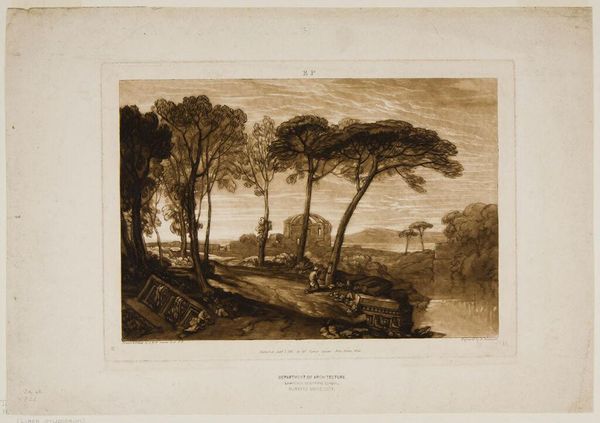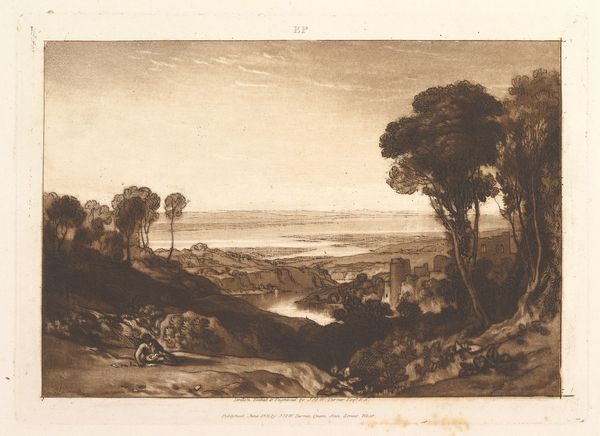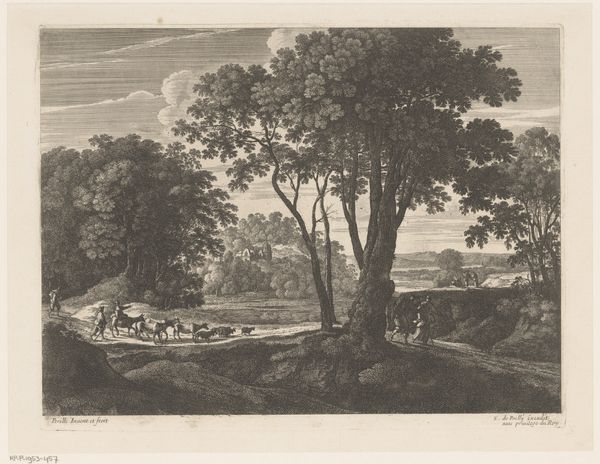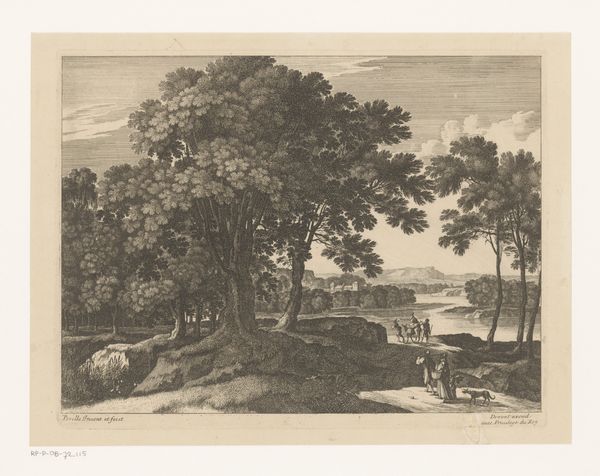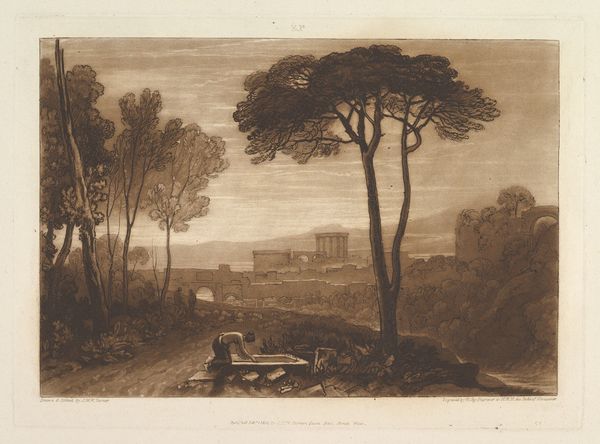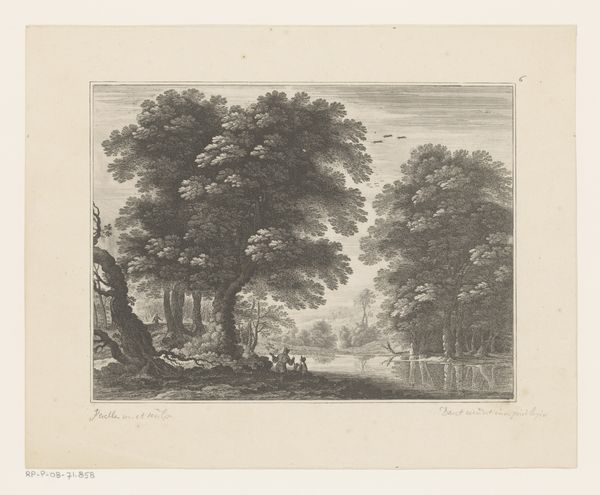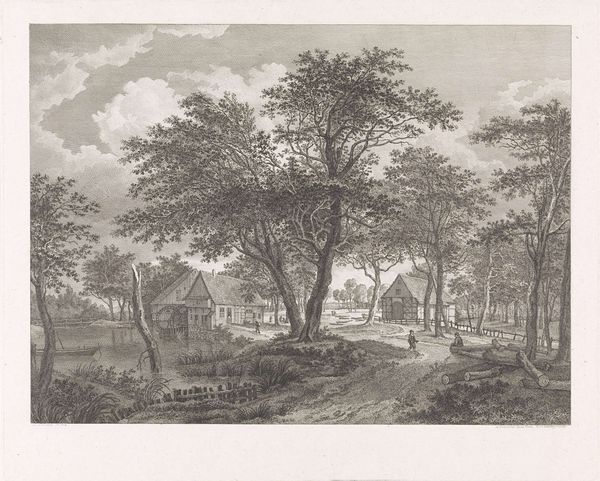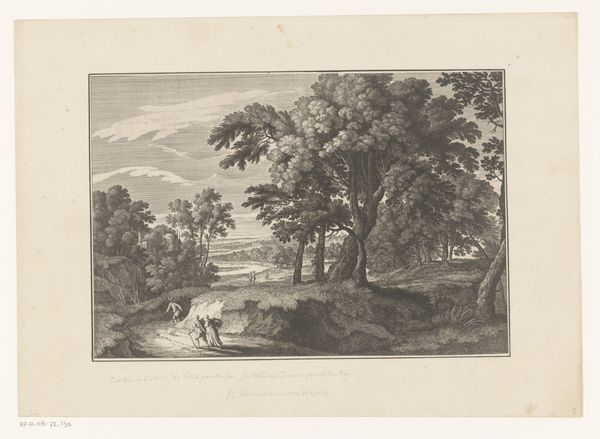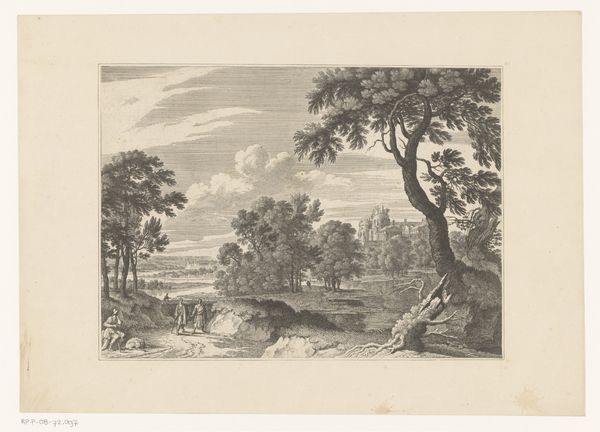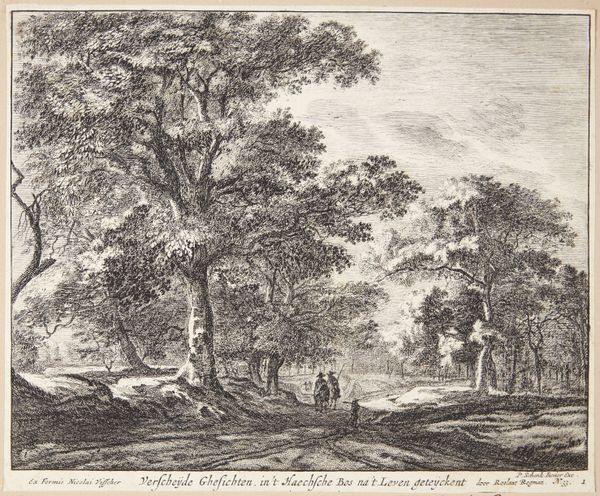
The Temple of Minerva Medica (Liber Studiorum, part V, plate 23) 1811
0:00
0:00
drawing, print, etching
#
drawing
# print
#
etching
#
landscape
#
romanticism
Dimensions: plate: 7 3/16 x 10 1/2 in. (18.3 x 26.7 cm) sheet: 8 1/4 x 23 in. (21 x 58.4 cm)
Copyright: Public Domain
Curator: This is "The Temple of Minerva Medica," an etching and mezzotint print made by J.M.W. Turner, published as part of his Liber Studiorum in 1811. Editor: It's strikingly melancholic. The monochrome palette creates a very subdued, almost haunted, atmosphere. The lines are so delicate yet they portray monumental, even industrial shapes. Curator: Indeed, Turner used etching and mezzotint to create varied textures and tonal effects. He manipulated the copper plate himself, employing tools such as rockers and scrapers, imbuing a direct connection to production with each piece of this work. Think of it—the social conditions in which these materials and skillsets become not only viable but valued. Editor: Focusing purely on its formal elements, the composition leads your eye on a journey, from the decaying structures in the foreground, through the skeletal trees and into the vast landscape. I'm intrigued by the use of light; how it subtly models form and articulates depth across the piece. The distribution of dark and light, this play of shade—it’s the backbone of the whole thing. Curator: Don't dismiss the very real processes. Turner, born into a London barber's family, learned these skills and actively challenged the aristocratic status of art. The *Liber Studiorum*, this project specifically, makes print a commercially viable form of art distribution to the bourgeois class that changed art consumption altogether. Editor: Perhaps. But if you just LOOK. See how he utilizes the verticality of those trees, that skeletal reaching against the horizontality of the land? Curator: See the printing processes providing new means for wider dissemination? That's the real foundation for the cultural change that he shaped. Editor: I see a masterful manipulation of light, line, and form creating a profound meditation on loss and decay! Curator: The artwork prompts us to reflect on the artist's labor as much as on themes of romanticism, ruin, and landscape, so in my view, there are far wider meanings to grasp. Editor: Yes, it also encourages a visceral, reflective response. It reminds us of art’s capacity to evoke feeling. Curator: So let's consider all these details; labor, distribution, context—as vital as the composition itself. Editor: Yes, certainly! But it all returns to that enduring, ineffable visual impact.
Comments
No comments
Be the first to comment and join the conversation on the ultimate creative platform.
